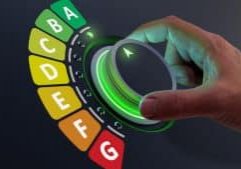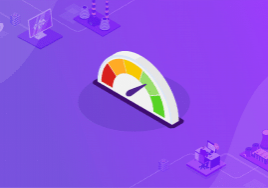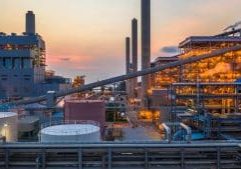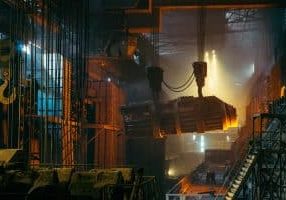In 2021, industrial activity was responsible for a quarter of global emissions (IEA). And with increasingly volatile energy prices, it’s important to take control of internal energy consumption. To help you take action, we put together 6 tips with our energy experts to help you reduce your energy consumption.
1. Digitalize your Energy Consumption
One of the first things you can do to save energy is digitalize your energy consumption.
The energy industry is relatively behind on digitalization compared to other sectors, such as the banking and medical fields. This is because for a long time energy was cheap, the energy transition was not a priority, and the technology available was not considered to be advanced enough. Today, we know that it is in fact an important investment.
By installing the right sensors and control screens to collect the right information, you can digitalize your energy, and then make more complex analysis and optimizations thanks to digital tools. This will help you improve your energy review and identify new saving opportunities. For example, by forecasting your consumption and creating energy models of your processes, it is easier to create an informed energy saving strategy.
2. Visualize your Energy Data
If you do not know what your energy consumption is, how can you reduce it?
If you want to reduce your energy consumption, you need to know how much you are consuming. Only then can you target areas for improvement and build an effective strategy. According to Gartner, the 3 factors for success when implementing a decarbonization strategy are: measurement, alignment, and execution.
It is important to monitor your processes and visualize your data clearly, as it should be accessible to many different users in a company (from corporate level executives to energy managers on site). For example, you can use digital dashboards that display your energy consumption using visuals such as sankey diagrams, pie charts, and graphs. This is where the digitalization of your energy consumption is helpful.
By using tools that automate the collection and visualization of data, human error is reduced, and time can also be invested in ROI and future projects. They can also help you visualize data such as energy losses which are otherwise hard to spot. Many leaks are invisible and are almost impossible to detect without “technology or tedious work process.”
There are advanced digital tools that can even go as far as showing you how external factors like weather conditions and energy prices will influence your energy consumption.
3. Identify Energy Losses
Once you have visualized your energy data, you can identify energy losses. To take a common example, air compressor leaks account for 20-30% of a compressor’s output on average. And this number can even be as high as 90%. This is an incredible financial loss because compressed air is one of the most expensive utilities used in factories.
Implementing digital tools can help you detect energy losses almost immediately. For example, using historical data and data science, an EMOS can create a baseline of your consumption. As an EMOS also collects your energy data in real time, you can be alerted to any drifts immediately. This will allow you to spot air leakages as soon as possible, and act on them to reduce energy waste. This applies to other sources of energy waste, such as doors which are left open, or equipment that has not been switched off.
4. Recycle Energy Waste
Unused energy is the cleanest and cheapest energy there is. If you identify your energy losses, you can then identify “free” energy that can be used for other processes.
A common example is heat. Up to 50% of energy is wasted as heat in the industrial sector. By analyzing the heat recovery possibilities on site and installing heat recovery systems, you can reuse this energy for other purposes. Heat that is given off from a machine can be used to warm your sites and heat water. This will significantly reduce energy waste and save costs.
One of the easiest examples of heat recovery is the recovery of heat from boiler exhaust fumes, which can be used to preheat your boiler feed water. You can also update your chiller with waste heat recovery systems, and this allows you to reduce your baseload.
5. Update your Equipment
Out of date equipment is a huge cause of energy waste, so it is important to have the right technology on your site. In fact, to reach net zero goals, technological developments are considered indispensable (IEA). This equipment can range from machinery and sensors to software.
However, this does not mean throwing out functioning equipment for the sake of it, as it is also important to consider the environmental impact of your hardware too. This is a lever to save money and make the most of what you have.
For example, as well as implementing heat recovery systems, you can start by replacing your 3 way valves with 2 way valves in order to avoid energy waste in terms of power consumption and heat dissipation. This can be applied to many utilities including HVAC.
6. Inform your Teams
It may seem like an obvious point, but it is one of the most important and often overlooked.
Your teams and stakeholders must be aligned on your energy saving goals, they must have a positive mindset, and be prepared to change their routines in order to make these changes. Having the right culture within your organization will improve overall competitiveness and success rates.
Having an appropriate digital energy management system in place, which can be accessed by people at all levels of a company, and which allows them to access the right information at the right time, is a tangible way to facilitate cohesion within your company.
We mustn’t forget, the future of digital is human!
An EMOS can be a huge advantage when implementing energy saving strategies. Want to learn more?










